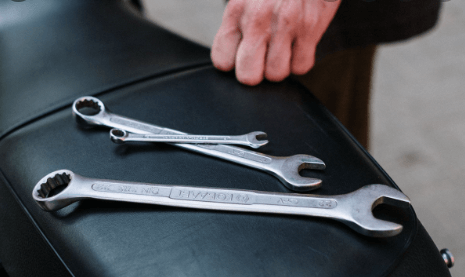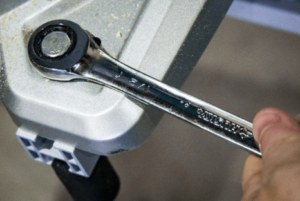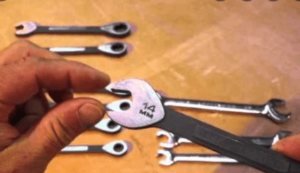With the possible exception of the humble hammer and handy screwdriver, there is no hand tool spread more evenly across the planet than the spanner. In German, ‘spanner’ means to tighten, and in Old English the origin of the alternate name ‘wrench’ (or wrencan) is to twist, so when you put those meanings together, the function of the spanner becomes clear.
But for your everyday tasks, especially in workplaces and industries where convenience, speed, precision and productivity are at a premium, is it time to consider making the evolutionary step to a ratchet spanner?
Visibly, a ratchet spanner is not as significant a step as the one from a run-of-the-mill spanner to a socket wrench – even though they are closely related. But it can actually be very easy to completely fail to spot the difference between a normal box-end spanner and a ratchet spanner.
Zoom in to the inner surface of that box end, however, and you’ll find the detail that makes all the difference – the ratcheting and rotating pawls. Slot that ratchet end over a corresponding fastener and you’ll complete your tasks in much the same way as you would with a socket wrench, with the ratchets allowing the tool to turn freely in one direction and then turn the fastener in the other direction.
So given its similar relative profile of a normal spanner with the functionality of a socket, and you could very well have a new list of reasons to add a ratchet spanner to your workplace’s toolbox.
Think you can make do with your trusty old standard and socket spanners? Here’s why you should give a quality ratchet spanner a second look:
-
Slim profile
Love the ease of the ratchet but need it to work in tight spaces? Often, professionals use their socket set over a standard spanner because of how much easier it is to use – avoid all the repositioning on the fastener and potential for slippage and simply ratchet back and forth until the job is done.
The socket’s downside, however, is when space is at a premium around that fastener – making the ratchet spanner’s standard profile with the functionality of a bulky socket wrench a regular tool of choice.
Also Read This: 5 Misconceptions about Flexible Work and How to Avoid Them
-
No ‘flip and turn’
Quite simply, the ratchet spanner is a standard spanner … evolved. When using a normal spanner, the way it’s done when there’s not oodles of space around the fastener is the ol’ ‘flip n turn’ method of repositioning.
This involves constantly taking the tool off the fastener, repositioning, and putting it back again – which isn’t just more time-consuming and frustrating, it can over time damage the fastener.
With the ratchet spanner, it’s just like using a socket. Leave the tool on the fastener and never lift it off until the job is done.
-
Flexible
So, lock in the benefits we’ve discussed so far – and now add one more clear advantage. It’s the ratchet spanner category’s flexibility … literally. What we mean is, you can make your ratchet wrench one of the most versatile tools in your toolbox by adding a crucial and popular extra feature – a flexible head.
Just as the standard spanner-like profile makes a ratchet preferable in tight situations over a socket, a flex head enables the user to still work in extremely cramped spaces by enabling the angle of attack on the fastener to be varied.
Are you convinced that your specific application, workplace and business might benefit from a ratchet spanner set? There’s still a lot to consider, including the lever length, the required tool profile and jaw thickness, the quality and type of materials used, and – of course – the price range. To make sure your ratchet spanner selections are fit for purpose, check in with an industry expert.
If you’re looking for a great ratchet spanner, RS Online can help. Visit the store, and shop the range today!




![1000 Girl Attitude Names for Truecaller ID | UPDATED [Included Boys Names] 1000 Attitude Names for Girls on Truecaller](https://edutechbuddy.com/wp-content/uploads/2025/05/ChatGPT-Image-May-21-2025-11_59_39-PM-1-150x150.png)








![1000 Girl Attitude Names for Truecaller ID | UPDATED [Included Boys Names] 9 1000 Attitude Names for Girls on Truecaller](https://edutechbuddy.com/wp-content/uploads/2025/05/ChatGPT-Image-May-21-2025-11_59_39-PM-1.png)